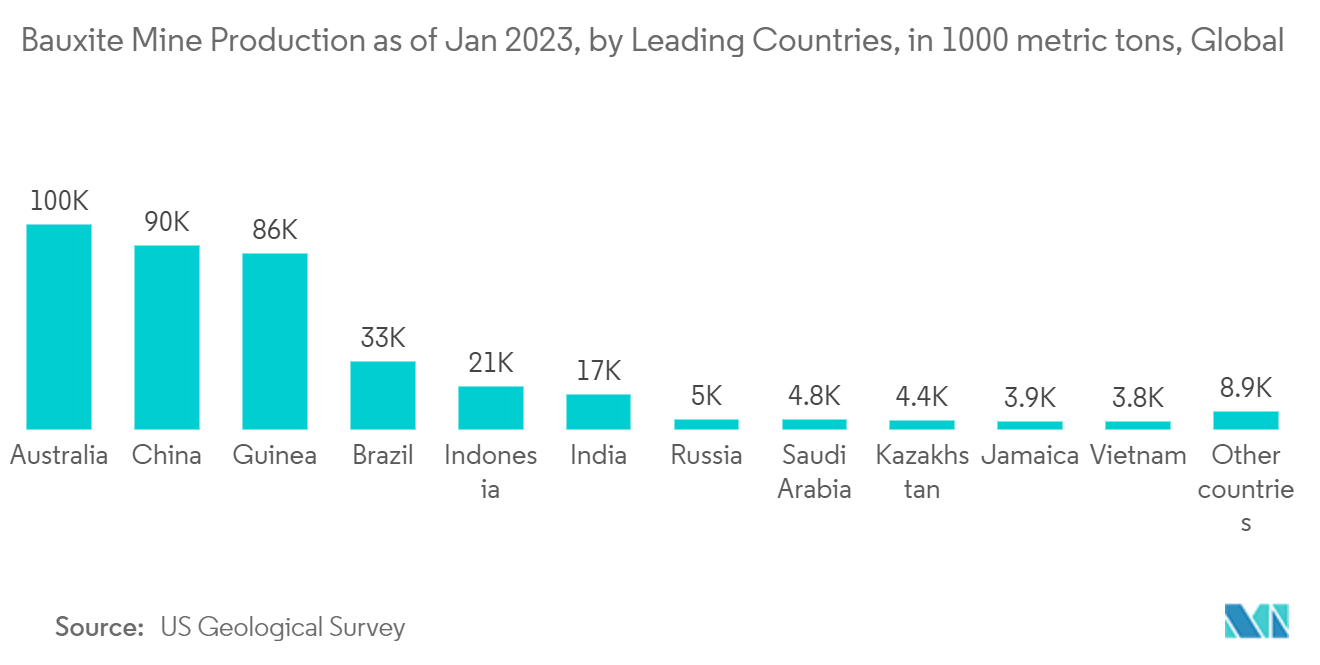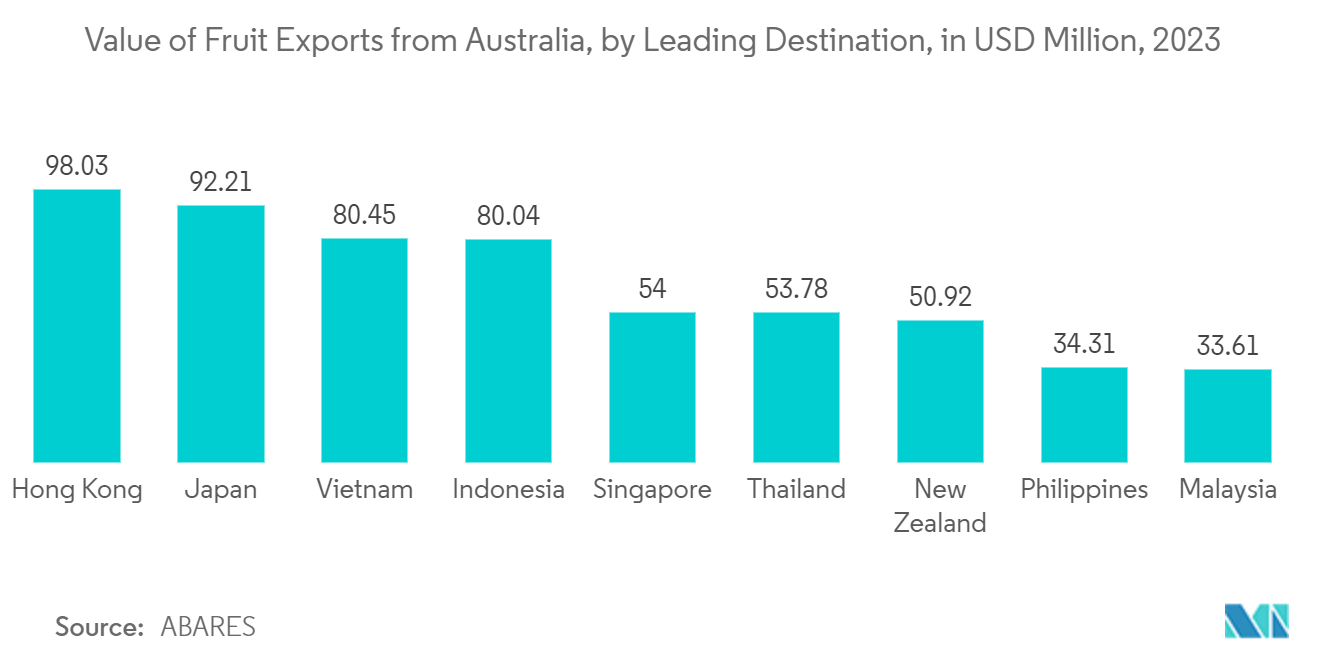Market Trends of Australia Food Cans Industry
Steel/Tin Material Type Segment is Expected to Hold Significant Market Share
- Aluminum is extensively used in food contact materials. The aluminum material possesses unique barrier and physical properties and is therefore used for food packaging. Even in its thinnest form, aluminum protects food contents against the quality-reducing effects of light, oxygen, micro-organisms, moisture, and unwanted aromas. Cans made from aluminum are lightweight, stackable, and strong, enabling companies to package and transport more food using less material.
- Companies in the market studied are focusing on enhancing the sustainability aspects of the packaging material. Aluminum stands out among the packaging materials from a sustainability perspective as it can be recycled unlimited times. While aluminum cans are trendy, they significantly increase energy efficiency as they chill faster and stay cool for extended periods. According to a new study by the Aluminum Association in November 2023, aluminum cans have a consistently lower carbon impact than glass bottles and plastic (PET) containers. Further, the combined greenhouse gas emission linked to the transportation of aluminum cans is lower than glass or plastic bottles. Cans made from aluminum are also tamper-proof and prevent manufacturers, retailers, and consumers from losing cans due to breakage.
- Furthermore, vendors, retailers, and consumers prefer aluminum cans over other products due to awareness of environmental impact. Aluminum does not degrade during recycling since its atomic structure is not altered during melting. Aluminum recycling is both economically and environmentally effective, as it consumes much less energy during the recycling process than it does to mine, extract, and smelt aluminum ore. Approximately 70% of all aluminum cans produced in Australia are collected for recycling (Source - Aluminium Can Group, George Unger and Associates & Kaal Australia).
- Producing aluminum requires the mining of bauxite. According to the latest data by Australian Aluminum Council Ltd, Australia is the world’s largest producer of bauxite, with five large mines supplying around 30% of global production. Further, as per the US Geological Survey in January 2023, Australian bauxite production was 100 million metric tonnes (Mt). Of these, 39.8 million Mt of bauxite was exported, and the remainder was converted to Australian alumina. Australian primary aluminum metal production was 1.51 million tons in 2022, making it the world’s sixth-largest producer.
- Thus, Australia has tremendous opportunities for manufacturers of aluminum food cans that can produce high-quality aluminum cans with an efficient supply chain by continuously available raw materials. Further, the country may significantly boost its economy by allowing more FDI in the aluminum can manufacturing sector.

Fruits and Vegetables Application Segment is Expected to Hold Significant Market Share
- Fruit and vegetable prices and availability in Australia have been affected by the recent weather. Rain has caused the price of green vegetables to skyrocket. Canned fruits and vegetables are convenient because they are available throughout the year regardless of the season and can be stored for months or years without refrigeration. Canned fruits, like canned vegetables, have a long shelf life, making them suitable for stocking up.
- The fruit production of the types covered by the Australian Canned Fruit Industry Council (Apples, Apricots, Peaches, Pears, and Plums) occurs between December and May. It is processed at 30,000-35,000 tons annually. The Australian canned fruit and vegetable industry comprises over 110 fruit-growing enterprises and one processor. The canned fruit business operates mainly in Victoria’s Goulburn and Murray Valleys, processing Australian apples, apples, Apaches, peaches, and plums in Shepparton.
- Some fruits and vegetables are currently much more affordable in cans, even though they are usually grown and processed in multiple countries before being sold in Australia. Fruit and vegetable prices have risen significantly for shoppers, although canned produce prices have remained relatively low in Australia.
- According to the University of Southern Queensland Associate Professor, farmers' growing costs have risen between 30% and 60% over the last five years, mainly due to higher fuel prices and more stringent industrial relations regulations. On the other hand, canned produce was usually produced cheaply overseas in large quantities by big corporations. The profession also stated that canned food has a longer shelf life, which makes it easier to make and store in large quantities without the risk of spoilage.
- The major factor anticipated to create growth opportunities is the advancements in canning technology. Increased research and development spending will be accompanied by the production of healthier fruits and vegetables, improved Nutri-score labels, and a more comprehensive range of convenience products. The market is expected to grow as a canned fruits and vegetables distribution network, including offline and online retailers specializing in niche or specialty food markets such as vegan and organic.
- According to ABARES, in FY 2023, the value of fruit exports from Australia to China totaled AUD 345 million (USD 225.07 million). China was the leading export destination for Australian fruit products, accounting for almost 25% of the total value of fruit exports.


